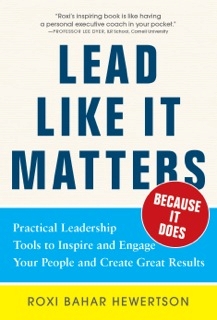What Does Your Voice Say About You?

A recent article in the Wall Street Journal discusses a study that shows that the quality of your voice has an even stronger impact on how you are perceived than the content of your message. As listeners provided feedback on speakers, it was found that their vocal quality mattered twice as much as the content of the message. The article cites another study as well, which showed that people who heard recordings of rough, weak, strained or breathy voices judged the speakers to be negative, weak, passive or tense. On the other hand, speakers with ‘normal’ voices are seen as successful, sexy, sociable and smart. This difference in perception can be particularly important in a professional environment where the way others perceive you can make the difference between gaining or losing a client or moving up the corporate ladder. A study in Forbes magazine even showed how poor vocal quality can actually cost you money in the long run.
One of the key components to a strong, dynamic voice is breath support. Your breath is the power behind your voice. If you aren’t breathing properly and getting enough air, you will strain your voice trying to be heard. Often people try to compensate for poor breath support by using muscular tension to increase volume. Over time, this will cause your vocal quality to suffer, and may cause physical damage to your vocal cords. Proper breath support begins with breathing from the abdomen, not the chest: your stomach and lower ribcage should expand outwards as you breathe, and your chest should not rise. If you have trouble mastering this technique, lay on your back with your hand on your stomach and take a deep, relaxing breath as though you were about to go to sleep. When in this position, our body naturally reverts to proper breathing. After you’ve gotten used to how this type of breathing feels, stand up and take a few deep breaths, maintaining the technique. Then, practice speaking aloud with this type of breathing.
You can also improve your vocal quality by eliminating habits that are damaging to your vocal cords. One common vocal sin is not drinking enough water. Parched vocal cords can be easily damaged and decrease the quality of your voice. Keep a bottle of water with you throughout the workday, especially situations in which you’ll be speaking for a long time or in front of a group of people. Also, be aware of other factors that can be dehydrating. Caffeine and alcohol are both dehydrating substances; if possible, limit your consumption of both prior to speaking in public. Some medications, such as antihistamines, can also have a drying effect.
Another bad habit is raising your voice to speak above noise. While there are certainly situations that call for more vocal power, consistently raising your voice above its natural volume can be damaging. Before shouting, make your first line of defense modifying the environment instead. Step out of a noisy room, shut the door, or walk closer to someone who is standing far away. If you are giving a presentation, use a microphone instead of trying to shout to the back of the room.
A powerful, dynamic voice is critical to professional success in today’s competitive workplace. Luckily you can change the way you sound! Follow the strategies above for a strong commanding voice. If you’d like to make more significant changes in your general vocal quality, you may want to enlist the help of a corporate speech-language pathologist who can provide vocal training to target your specific needs.
Remember: it doesn’t matter how strong your professional skills are if your listener is distracted by your voice or communication style. But with a little time and effort, you can make your communication skills your most powerful professional tool!
About the Author

If you are interested in learning more ways to improve your business communication skills, contact Jayne at [email protected] or visit www.corporatespeechsolutions.com.

 A potential employer takes just a moment or two to size up a potential candidate, leaving job seekers little room for error when trying to make a positive first impression. Whether presenting themselves online, in-person, or on paper, job seekers relay a lot of information to a potential employer in the first few minutes. Employers quickly assess confidence, energy level and professionalism – all key traits that tell the employer what a candidate might bring to the workplace. As a result, it’s very important to present yourself in the best possible light.
A potential employer takes just a moment or two to size up a potential candidate, leaving job seekers little room for error when trying to make a positive first impression. Whether presenting themselves online, in-person, or on paper, job seekers relay a lot of information to a potential employer in the first few minutes. Employers quickly assess confidence, energy level and professionalism – all key traits that tell the employer what a candidate might bring to the workplace. As a result, it’s very important to present yourself in the best possible light. Kathy Harris is Managing Partner of New York City-based Harris Allied, an executive search firm specializing in Technology, UX/UI Design and Quant Analyst placement services in the Financial Services, Professional Services, Consumer Products, Digital Media and Tech Industries For more information, visit
Kathy Harris is Managing Partner of New York City-based Harris Allied, an executive search firm specializing in Technology, UX/UI Design and Quant Analyst placement services in the Financial Services, Professional Services, Consumer Products, Digital Media and Tech Industries For more information, visit  Power Stars to Light the Business Flame, by Hank Moore, encompasses a full-scope business perspective, invaluable for the corporate and small business markets. It is a compendium book, containing quotes and extrapolations into business culture, arranged in 76 business categories.
Power Stars to Light the Business Flame, by Hank Moore, encompasses a full-scope business perspective, invaluable for the corporate and small business markets. It is a compendium book, containing quotes and extrapolations into business culture, arranged in 76 business categories.
 Leadership authority Roxana (Roxi) Hewertson is a no-nonsense business veteran revered for her nuts-and-bolts, tell-it-like-it-is approach and practical, out-of-the-box insights that help both emerging and expert managers, executives and owners boost quantifiable job performance in various mission critical facets of business. Through
Leadership authority Roxana (Roxi) Hewertson is a no-nonsense business veteran revered for her nuts-and-bolts, tell-it-like-it-is approach and practical, out-of-the-box insights that help both emerging and expert managers, executives and owners boost quantifiable job performance in various mission critical facets of business. Through